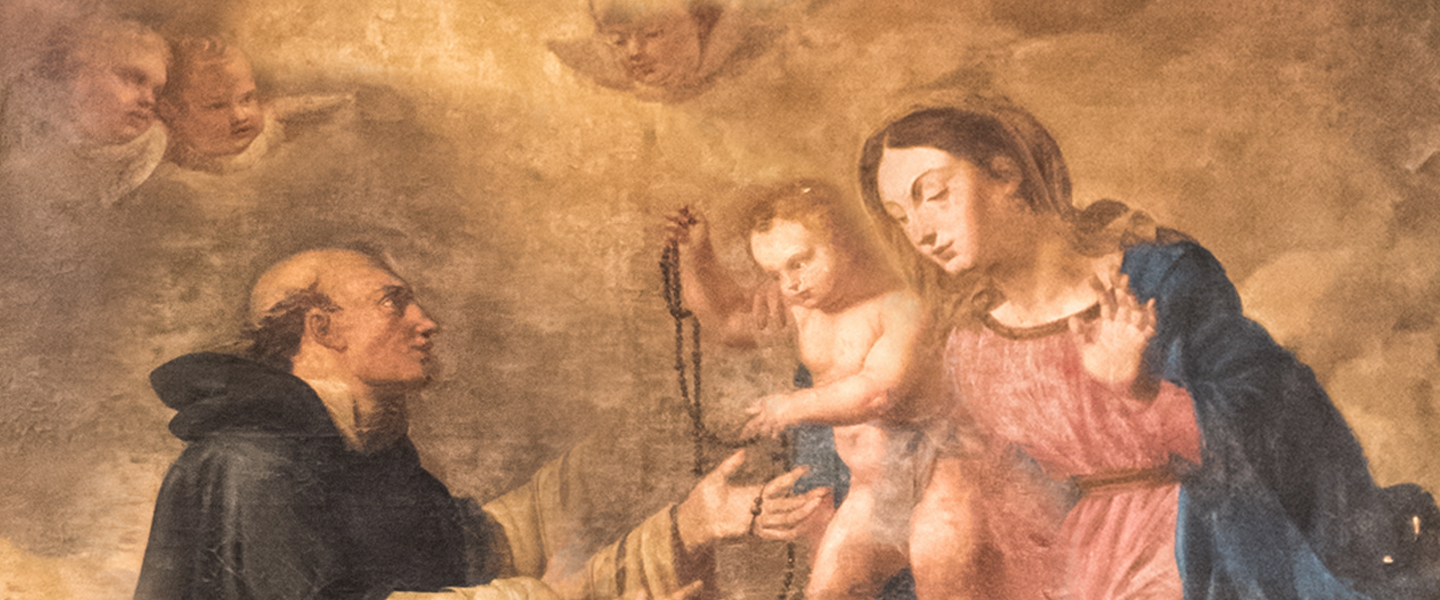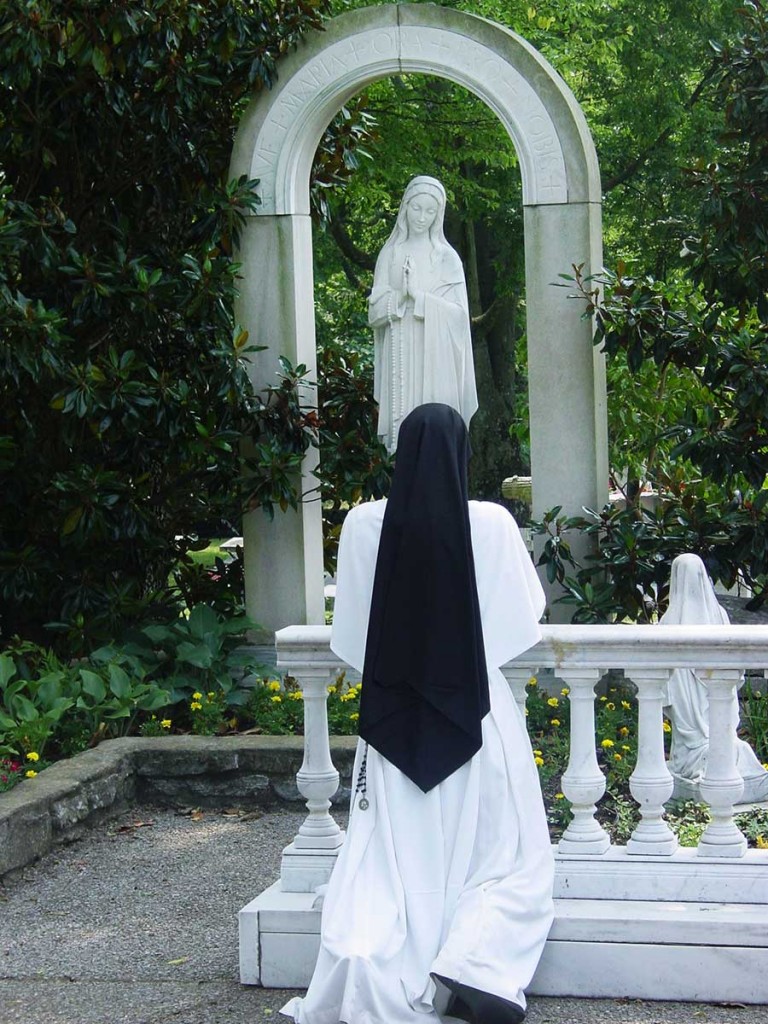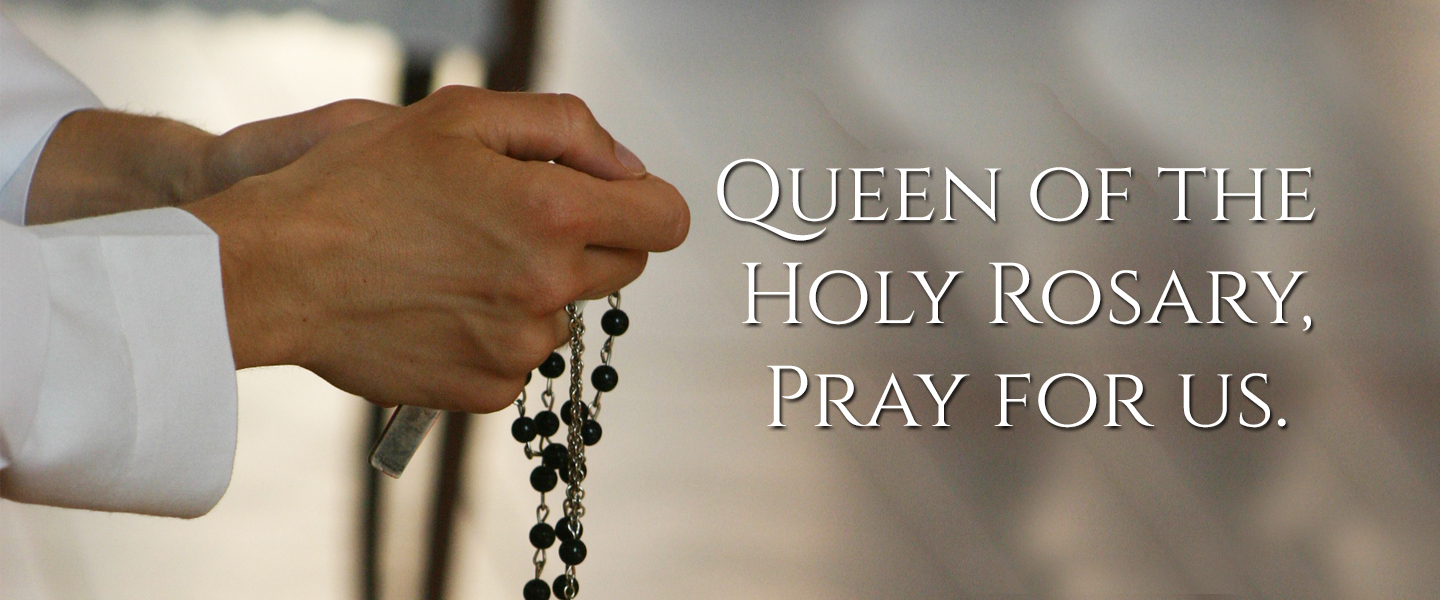
The Church has always attributed particular efficacy to this prayer, entrusting to the Rosary, to its choral recitation and to its constant practice, the most difficult problems. At times when Christianity itself seemed under threat, its deliverance was attributed to the power of this prayer, and Our Lady of the Rosary was acclaimed as the one whose intercession brought salvation. (Rosarium Virginis Mariae, 39)
 Devotion to the Rosary is especially associated with the Order of Preachers. Three great Dominicans helped to spread devotion to Our Lady of the Rosary. Several centuries after St. Dominic, a Dominican friar from Brittany became one of history’s greatest promoters of the Rosary. His zeal both for his Order and for the Blessed Virgin Mary was so great that Alan de la Roche (1428-1475, also called Alan de Rupe) was convinced that the Rosary was undoubtedly Dominican in origin. De la Roche wrote in Trésor des livres rates et précieux that saying 150 Hail Marys in place of the 150 Psalms of the Divine Office originated with St. Dominic. He preached on the Rosary and popularized its use widely and successfully. At de la Roche’s urging, the Rosary became a special “apostolate” of the Dominican Order, which has continued to preach its spiritual benefits to this day.
Devotion to the Rosary is especially associated with the Order of Preachers. Three great Dominicans helped to spread devotion to Our Lady of the Rosary. Several centuries after St. Dominic, a Dominican friar from Brittany became one of history’s greatest promoters of the Rosary. His zeal both for his Order and for the Blessed Virgin Mary was so great that Alan de la Roche (1428-1475, also called Alan de Rupe) was convinced that the Rosary was undoubtedly Dominican in origin. De la Roche wrote in Trésor des livres rates et précieux that saying 150 Hail Marys in place of the 150 Psalms of the Divine Office originated with St. Dominic. He preached on the Rosary and popularized its use widely and successfully. At de la Roche’s urging, the Rosary became a special “apostolate” of the Dominican Order, which has continued to preach its spiritual benefits to this day.
Another promoter of the Rosary was St. Louis de Montfort (1673-1716), a diocesan priest and Third Order Dominican whose great devotion to the Blessed Virgin Mary inspired him to organize and spread devotion to the Rosary. He preached thousands of missions on the Rosary and also wrote books on the Blessed Mother and the Rosary, including The Secret of Mary and The Secret of the Rosary.
The earliest documented wearing of the Rosary, as in the Dominican habit, seems to have originated with the crusading military orders in the twelfth century. The Rosary resembled a spiritual “sword” ready for spiritual battle. Therefore wearing the Rosary as a part of the habit of the Order of Preachers incorporated what was already a century-old custom.
For the Dominican Sisters of St. Cecilia, the Rosary is listed in our Constitutions as an official part of our habit. An observer will often see sisters walking on our grounds along the “Rosary Walk,” individually or in a group, Rosary in hand, as they offer this prayer. We pray the Rosary after Vespers every evening and with the children in our schools. When it is stretched to its full length, several children can fit inside the circle of a sister’s Rosary! As Dominican Sisters of St. Cecilia, we daily have recourse to this beautiful prayer as we seek the face of Christ through the eyes of His Mother.
Additional devotions enkindle our love for Our Lady and her Rosary. Our monthly Rosary Procession is one of these devotions. While most processions are liturgical, some have developed from the piety of the faithful, such as the Rosary Procession. The Rosary Procession was instituted in our Congregation in the 1930s. This procession is meant to draw our minds and hearts into the mystery of this Marian prayer. Traditional to the Rosary Procession is the Ave Maris Stella, a hymn loved by St. Dominic. He is said to have sung this hymn as he his journeyed through southern France. We can picture ourselves walking with Dominic, begging the help of our heavenly Mother for the apostolic labors we endeavor in the name of her Son.
The month of October is traditionally dedicated to the Rosary. The main reason for the association is rooted in Church history when Pope Pius V was faced with the threat from the Ottoman Turks, who were dedicated to spreading Islam. Pope Pius, himself a Dominican, ordered public prayers and recitation of the Rosary throughout Christendom. On October 7, 1571, the Christian fleet, heavily outnumbered, devastated the Turkish fleet in a tremendous naval battle at Lepanto, off the coast of Greece. In the middle of his work in the papal palace that day, the Pope had a vision that the Christians had been victorious. Because the victory was attributed to the saying of the Rosary, the Pope instituted October 7 as a feast day honoring Our Lady of Victory. The name of the feast was later changed to Our Lady of the Rosary. It is now a feast of the universal Church.
As Dominican Sisters of St. Cecilia, we celebrate the month of October in several ways in order to rekindle our devotion to and love for Our Lady and her Rosary. We designate the first Sunday of October as Rosary Sunday: after Mass, several sisters begin reciting the Rosary aloud in front of the statue of the Blessed Mother, and sisters come and go throughout the day so that the Rosary is said continually for the entire day. The sisters also participate in extra Marian devotions both individually and as a community throughout the month.


 Back
Back